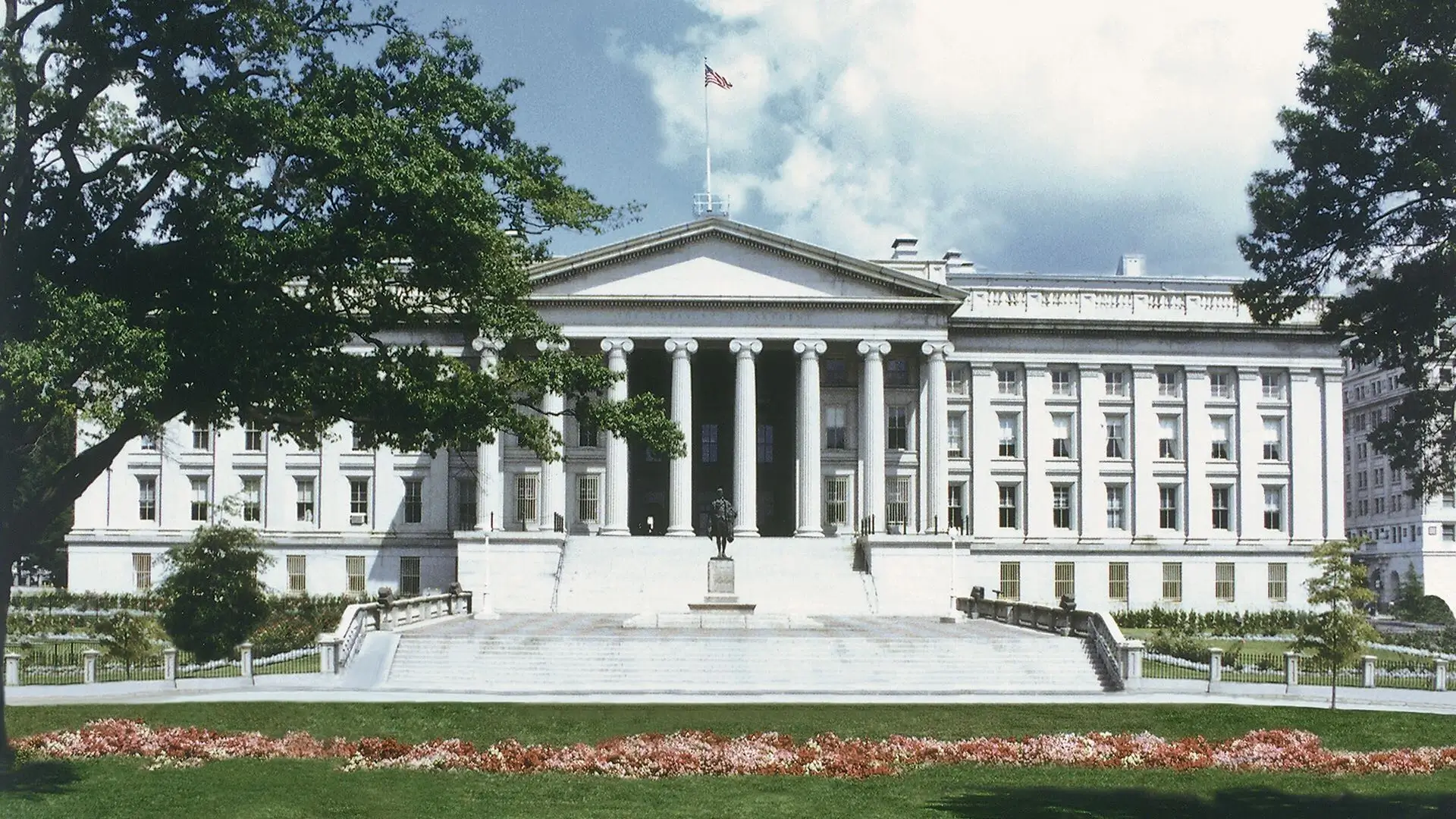U.S. Treasury Launches Record-Breaking Bond Buyback Amid Market Volatility
08.06.2025 10:00 2 min. read
In a move not seen in decades, the U.S. Treasury Department has initiated a historic $10 billion bond buyback—its largest ever—targeting securities set to mature between mid-2025 and mid-2027.
The strategic repurchase is aimed at managing the government’s debt profile more efficiently, especially as elevated interest rates continue to make borrowing more expensive.
Bond buybacks like this one allow the Treasury to proactively retire some of its debt before it matures. This approach not only helps reduce long-term interest obligations but also gives the department flexibility in shaping its overall debt composition. The timing is no coincidence: yields have surged due to the Federal Reserve’s “higher-for-longer” rate stance, keeping pressure on borrowing costs.
Speaking earlier this year, Treasury Secretary Scott Bessent downplayed fears that foreign entities were behind recent turbulence in the bond market. Instead, he pointed to domestic factors, particularly leveraged traders exiting positions. He also left the door open for future buybacks, signaling that the Treasury is prepared to scale operations if the need arises.
When asked whether the department is coordinating with Fed Chair Jerome Powell on contingency plans, Bessent firmly rejected the idea of looming danger. “We’re nowhere near a crisis mode,” he told Bloomberg in April, adding that current measures are part of prudent debt management—not emergency action.
To put the scale in perspective, the last time the Treasury conducted a major buyback was in 2000, when it repurchased just $3 billion worth of bonds. This latest effort underscores how dramatically the landscape has shifted in the face of persistent inflation, rising yields, and tightening monetary policy.
-
1
U.S. Bank Advises Clients to Drop These Cryptocurrencies
29.06.2025 10:00 2 min. read -
2
FTX Halts Recovery Payments in 49 Countries: Here Is the List
04.07.2025 18:00 2 min. read -
3
Chinese Tech Firms Turn to Crypto for Treasury Diversification
26.06.2025 17:00 1 min. read -
4
What Are the Key Trends in European Consumer Payments for 2024?
29.06.2025 8:00 2 min. read -
5
What Brian Armstrong’s New Stats Reveal About Institutional Crypto Growth
29.06.2025 15:00 2 min. read
JPMorgan Lawsuit Threatens Crypto Access and Open Banking Rights
JPMorgan and other major U.S. banks are under fire for a lawsuit aimed at dismantling the Consumer Financial Protection Bureau’s (CFPB) newly established “Open Banking Rule.”
Greed Holds as Market Momentum Builds: What is the Market Sentiment
The crypto market remains firmly in “Greed” territory, with CoinMarketCap’s Fear & Greed Index clocking in at 69/100 on July 19. Despite a modest 24-hour dip from 71, the index has now held above 60 for 11 consecutive days.
Top 7 Crypto Project Updates This Week
The crypto industry saw major advancements this past week across DeFi, NFT, Layer 2, and AI-powered platforms.
Peter Thiel-Backed Crypto Exchange Files for IPO
Cryptocurrency exchange Bullish, backed by billionaire investor Peter Thiel, has officially filed for an initial public offering (IPO), marking a major step toward entering the public markets.
-
1
U.S. Bank Advises Clients to Drop These Cryptocurrencies
29.06.2025 10:00 2 min. read -
2
FTX Halts Recovery Payments in 49 Countries: Here Is the List
04.07.2025 18:00 2 min. read -
3
Chinese Tech Firms Turn to Crypto for Treasury Diversification
26.06.2025 17:00 1 min. read -
4
What Are the Key Trends in European Consumer Payments for 2024?
29.06.2025 8:00 2 min. read -
5
What Brian Armstrong’s New Stats Reveal About Institutional Crypto Growth
29.06.2025 15:00 2 min. read


